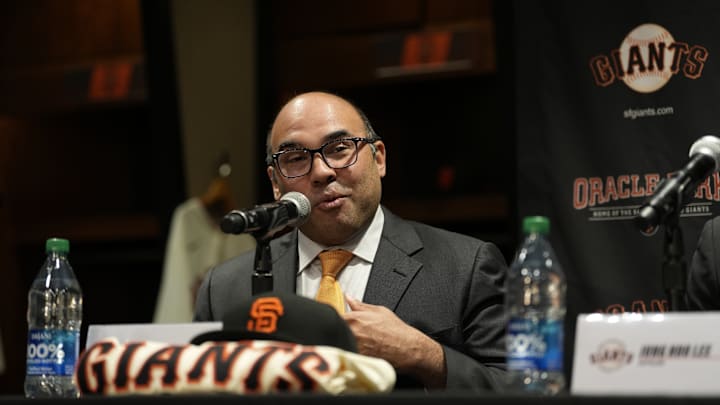Like much of baseball, the SF Giants have had a relatively quiet offseason. The exception being when they signed outfielder Jung Hoo Lee to a six-year, $113 million pact. As they head into the new year, what is their projected payroll for 2024?
What is the projected SF Giants payroll as they head into the new year?
The only other notable move they have made so far was adding Tom Murphy to a two-year, $8 million pact with a team option for a third season. That team option carries a $250,000 buyout, so the guaranteed amount is $8.25 million.
In addition to this, the Giants added Trevor McDonald, Kai-Wei Teng, and Erik Miller to the 40-man roster to protect them from the Rule 5 draft. They also claimed reliever Devin Sweet off of waivers from the Oakland A's and swung a trade to acquire outfielder T.J. Hopkins from the Cincinnati Reds.
That has been the extent of the Giants' offseason so far. It has been a quiet one, but not unique when compared to the rest of baseball. The Los Angeles Dodgers, St. Louis Cardinals, Kansas City Royals, and Atlanta Braves have been the most active teams thus far.
The free-agency dam should break soon enough and it bears mentioning that there are still some really good options remaining. Sure, there is no Shohei Ohtani or Yoshinobu Yamamoto on the market, but there are several players who would improve the Giants' roster that they should consider.
And, they still have plenty of payroll space to do so. According to Cot's, the Giants have a projected payroll of $189.7 million against the Competitive Balance Tax (CBT). This does include projected arbitration estimates for J.D. Davis ($5.75 million), Thairo Estrada ($4.25 million), LaMonte Wade Jr. ($4 million) and Tyler Rogers ($2.75 million).
By the middle of January, the Giants will need to either agree to terms with each of their remaining arbitration-eligible players or prepare to go to an arbitration hearing by exchanging salary figures. The former option is the preferred approach, but players do occasionally go to arbitration.
With that being said, there should not be too much variation between the projected and actual salary numbers for any of those four players. That $189.7 million is a reliable number.
I should add that CBT payroll is different than the actual payroll because CBT payroll takes a player's guaranteed money and divides it by the number of years on the deal. For example, Logan Webb signed a five-year, $90 million extension that begins in 2024. His CBT hit is $18 million for the next five years even if his actual payroll amounts differ.
The actual payroll payments are determined within the player's contract. I typically use CBT payroll because there is an imposed limit by the league, whereas actual payroll is set by ownership and projected revenue for the upcoming season. It is a legitimate constraint, but one that is set internally. If the team invests in its roster to make a good on-field product, the revenue will flow.
In 2024, the CBT threshold is $237 million, meaning that the Giants have about $47 million remaining before they cross that threshold. They can choose to cross that threshold but would owe a tax on the overage. The penalties become stiffer if a team is a repeat offender of crossing the CBT threshold or if a team that was in the luxury tax last year signs a player who rejected a qualifying offer. The Los Angeles Dodgers and Ohatni is an example of the latter.
So, the Giants still have plenty of room to spend. Are they going to allocate that remaining space or even potentially cross the CBT threshold by signing Blake Snell AND Matt Chapman? I have my doubts, but they still have a lot of payroll flexibility to improve the roster for next year.
